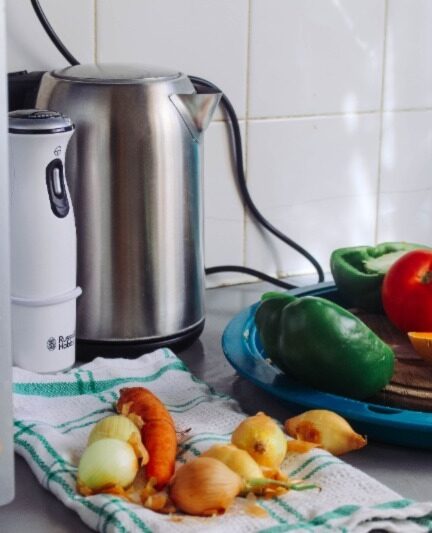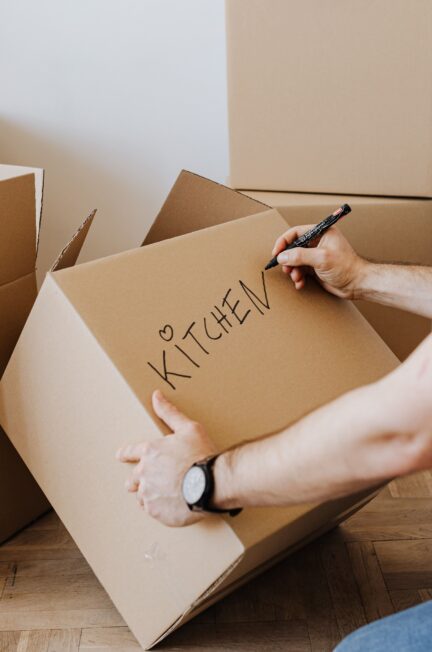Stainless steel kitchen appliances can add a sleek and modern touch to any kitchen, but they can also be a magnet for fingerprints, smudges, and streaks. If you’re tired of constantly wiping down your stainless steel appliances only to have them look dirty again moments later, then this article is for you. Say goodbye to frustrating cleaning sessions and hello to sparkling stainless steel with these helpful tips and tricks.
How To Clean Stainless Steel Kitchen Appliances?
Cleaning stainless steel appliances can be a daunting task, especially if you’re not sure where to start or what products to use. But fear not, because I’m here to guide you through the process step by step on how to clean and maintain your stainless steel kitchen appliances. From choosing the right cleaning products to using the correct techniques, I’ll show you how to achieve that showroom shine on your stainless steel appliances.
So, if you’re ready to banish smudges and bring back the lustre to your stainless steel kitchen appliances, let’s dive in and discover the secrets to effective and hassle-free cleaning.
Gather Cleaning Supplies
Getting the right cleaning supplies is vital for ensuring an effective cleansing of your stainless steel kitchen gadgets. Here is a list of must-have items:
- Microfiber Towels are ideal for cleaning and polishing stainless steel surfaces without leaving scratches or stains.
- Mild Dish Soap combined with water is perfect for cleaning oil, debris, and stains off stainless steel without damaging it.
- White Vinegar: Diluted white vinegar removes persistent stains and water marks from stainless steel surfaces, leaving them sparkling clean.
- Baking Soda: A paste composed of baking soda and water may be used to remove difficult stains and filth off stainless steel without harming it.
- Olive Oil or Baby Oil: Applying a few drops of olive oil or baby oil and polishing with a microfiber cloth creates a gorgeous sheen while also preventing fingerprints.
To maintain the delicate stainless steel surface, use non-abrasive products such as microfiber towels and gentle cleaning agents. Scratching and damaging stainless steel with abrasive cleansers or harsh cleaning pads can spoil its smooth look. Using non-abrasive products guarantees that the stainless steel keeps its sheen and is scratch-free, allowing it to retain its beauty and lifespan for many years.
Daily Maintenance with Warm Soapy Water
Maintaining stainless steel appliances with warm soapy water regularly is a simple and efficient approach to keeping them looking clean and shiny. Wiping down stainless steel appliances with warm soapy water helps to avoid the accumulation of filth, dirt, and fingerprints over time. The mild dish soap in warm water softly removes oil and smudges without damaging the stainless steel surface.
By following this regular maintenance practice, homeowners can keep their appliances looking sleek and bright and avoid the need for more rigorous cleaning in the future. It also reduces the likelihood of stains and discolouration, guaranteeing that the stainless steel keeps its beauty and brilliance.
This simple act of washing with warm soapy water may go a long way toward keeping the perfect appearance of stainless steel appliances, making them pleasant to use and appreciate in any kitchen or house.
Removing Stubborn Stains with White Vinegar
Step-by-Step Instructions for Using White Vinegar to Remove Stubborn Stains:
- Mix the Solution: To prepare the solution, dilute white vinegar with equal parts water in a small basin. This results in a mild yet effective cleaning solution.
- Apply The Solution: Soak a soft cloth or sponge in the vinegar mixture and dab it immediately on the stains or water spots on the stainless steel surface.
- Allow the vinegar solution to remain for a few minutes on the spots. This allows the vinegar to dissolve the dirt and mineral deposits.
- Gently Clean the stained areas using a cloth or sponge in circular strokes. To avoid scratching the stainless steel, avoid applying too much pressure.
The acidic properties of white vinegar make it efficient as a natural cleaning agent. The acetic acid in vinegar helps in the removal of stubborn stains, mineral deposits, and water spots without causing damage to the stainless steel surface. It is a safe and environmentally friendly alternative to harsh chemical cleaners, making it a great choice for keeping stainless steel appliances and surfaces looking beautiful and shiny.
Restoring Shine With Baking-Soda Paste
A baking soda paste mixed with water is an excellent and natural way to restore the shine of stainless steel equipment. Simply combine baking soda and just a sufficient amount of water to make a thick, homogeneous paste.
Using a soft cloth or sponge, gently massage the baking soda paste onto the stainless steel surface. Baking soda’s mild abrasiveness aids in the removal of persistent stains and filth without harming the metal. The paste breaks down and dissolves grime and residue as it is applied, leaving the stainless steel clean and glossy.
Allow the baking soda paste to stay for a few minutes after applying it to allow the cleaning qualities to work their magic. Then, using a clean damp cloth, wipe away the paste and thoroughly rinse the area with water. Finally, to get a shining finish, dry the stainless steel with a soft cloth.
Using a baking soda paste, this easy and non-toxic procedure may easily restore the shine of stainless steel equipment, leaving them appearing renewed and lovely in any kitchen or house.
Buffing With Olive Oil
Olive oil is a natural and eco-friendly stainless steel polish that adds an extra shine and protective coating to the surface. Its hydrating and rich texture make it a perfect choice for restoring the shine of stainless steel equipment.
Begin by washing the surface with warm soapy water to eliminate any dirt or grime before buffing with olive oil. Pour a few drops of olive oil onto a soft cloth or microfiber towel once the area is clean and dry. Gently massage the cloth in circular motions over the stainless steel surface to ensure uniform covering.
As the olive oil is rubbed onto the stainless steel, it fills up any little scratches or defects, making the surface smoother and more polished. The olive oil acts as a barrier against fingerprints and smudges, making it easier to keep the shine for longer periods.
After buffing, wipe away any leftover oil with a clean, dry cloth, leaving the stainless steel with a dazzling and long-lasting sheen. This natural polishing procedure using olive oil is a simple yet effective approach to improve the appearance of stainless steel equipment.
Avoid Harsh Chemicals and Abrasive Cleaners
It is critical to avoid using harsh chemicals and abrasive cleansers while cleaning stainless steel equipment. Harsh chemicals, such as bleach or ammonia-based cleansers, can corrode and discolour stainless steel, resulting in irreversible damage. Similarly, harsh cleansers and scrubbing pads can leave unattractive scratches on stainless steel, detracting from its elegant appearance.
Instead, use mild cleaning agents such as soapy warm water, white vinegar, and baking soda paste. These natural alternatives successfully remove stains and filth without causing any damage to the stainless steel. To avoid scratches, clean with microfiber towels or soft sponges.
By sticking to gentle cleaning solutions, you can ensure that your stainless steel appliances retain their original beauty and shine for years to come. Avoiding harsh chemicals and abrasive cleaners not only safeguards the appearance of the appliance but also contributes to its overall durability, allowing you to enjoy the gleaming and elegant look of stainless steel for a lifetime.
Prevent Scratches With Proper Cleaning Techniques
It is essential to use correct cleaning procedures on stainless steel surfaces to avoid scratches. When cleaning, advise readers to use soft towels or sponges, since these mild materials are less likely to harm the stainless steel. Moving with the grain of the stainless steel is also important since it reduces the possibility of causing unattractive scratches.
Cleaning using non-scratch products is critical to preserving the flawless appearance of stainless steel. Steel wool or abrasive cleaning pads, for example, can easily scrape the surface, causing irreversible damage. Scratches not only harm the looks, but they also create potential locations for dirt and grime to settle, making future cleaning more difficult.
By using soft and non-scratch materials, readers can maintain the smooth and shiny finish of their stainless steel appliances while preventing unnecessary wear and tear. Adopting proper cleaning techniques ensures that the stainless steel retains its beauty and durability, keeping it looking new and elegant for years to come.
Conclusion
Finally, thoroughly cleaning stainless steel kitchen equipment is critical for preserving its lustre and look. To do this, regular care with warm soapy water to minimize dirt accumulation and the application of white vinegar to remove persistent stains and water spots are required. Furthermore, restoring the shine using a baking soda paste and rubbing it with olive oil helps keep the stainless steel shiny.
To avoid scratches, always use soft towels or sponges and move with the grain of the stainless steel. It is also critical to avoid using harsh chemicals and abrasive cleansers to extend the life of the equipment. Homeowners may enjoy a dazzling and beautiful kitchen that reflects the beauty of well-maintained stainless steel appliances by following these guidelines.



